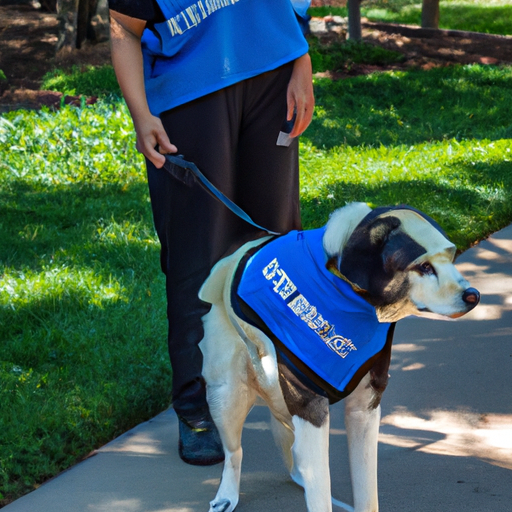Service dogs are a lifeline for many individuals. They provide invaluable assistance, companionship, and a sense of independence. If you’re a caregiver, you’re often on the frontlines of managing unique challenges. Here’s how service dogs can make your task a little easier.
H2: The Role of Service Dogs
Service dogs are more than pets or companions. They are working animals, trained to perform tasks that a person cannot because of a disability. These tasks range from the physical, like fetching items or opening doors, to the intangible, like providing emotional support or alerting to changes in a person’s medical condition.
- Physical Assistance: Service dogs can pull wheelchairs, aid in balance, fetch items, turn lights on and off, press elevator buttons, and much more.
- Medical Alert: They can detect changes in blood sugar levels, alert to impending seizures, and even detect certain types of cancer.
- Psychiatric Service: These dogs are trained to detect and lessen the effects of a psychiatric episode.
H2: Training and Certification
How does a dog become a service dog? It involves intensive training, usually starting when the dog is a puppy and lasting for about two years.
- Selection: Not all dogs are cut out for this work. Trainers look for dogs that are calm, willing to please, and quick to learn.
- Basic Training: This involves house training, obedience, and socialization.
- Task Training: Here, the dog learns the specific tasks they will need to perform to assist their handler.
- Public Access Test: This ensures the dog behaves well in public places.
| Stage | Duration |
|---|---|
| Selection | Few weeks |
| Basic Training | 6 months |
| Task Training | 1 year |
| Public Access Test | Few weeks |
H2: Service Dogs and The Law
The law protects the rights of individuals with service dogs. Under the Americans with Disabilities Act (ADA), service dogs are allowed in public places where other dogs are not.
- Landlords and employers cannot discriminate against individuals with service dogs.
- They cannot ask for proof of the dog’s certification or inquire about the person’s disability.
H2: Care and Maintenance
Caring for a service dog is similar to caring for a pet dog. Regular feeding, exercise, and veterinary care is essential. However, there are additional considerations due to their working status.
- Service dogs should wear a vest or harness identifying them as service dogs when in public.
- They should not be petted or distracted while working.
- Regular downtime is crucial for their mental wellbeing.
H2: Frequently Asked Questions
Q: Can any breed of dog be a service dog?
A: Yes, any breed can be a service dog, provided they meet the temperament and ability requirements.
Q: Can I train my own service dog?
A: Yes, you can, but it’s a big commitment. Professional help is often needed.
Q: What’s the difference between a service dog and an emotional support animal?
A: Service dogs are trained for specific tasks, while emotional support animals provide comfort.
Q: Do service dogs always have to be working?
A: No, they need downtime too. They play and relax like any other dog when they’re off duty.
Q: Can service dogs go everywhere with their handlers?
A: Generally, yes. Under the ADA, they’re allowed in most public places.
Remember, service dogs are more than just helpers; they’re companions, confidantes, and a crucial part of a support network. They are there to make your caregiving journey a little bit easier, safer, and more enjoyable.



